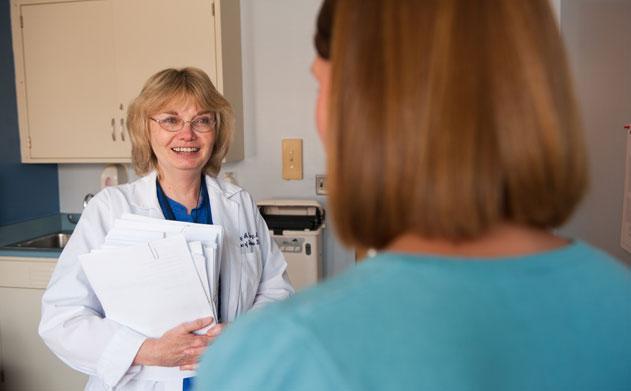About Us

The Women’s Interagency HIV Study (WIHS) is an ongoing observational study since 1993, with goals to longitudinally characterize the chronic progression of both treated and untreated HIV infections among women. From this study, valuable information about the variable demographics of HIV among women are elicited. WIHS aims to provide a deeper understanding about the course of the HIV epidemic in the United States.
-Dr. Mary Young, M.D.
Assistant Professor of Medicine, Division of Infectious Disease
Director, Clinical Core and Georgetown University Institutional Representative, DC D-CFAR
Director of HIV Women’s Program
Principal Investigator, WIHS
History
At the advent of the HIV epidemic, disease demographics and research efforts suggested an emphasis on men who have sex with men. The Women’s Interagency HIV Study (WIHS) was established to reflect a crucial change in the course of HIV/AIDS history, as disease demographics began shifting from primarily male populations to include other affected groups. The Multicenter AIDS Cohort Study (MACS), initially funded by the National Institute of Allergy and Infectious Disease (NIAID) focused on a study population comprised mainly of white homosexual/bisexual men residing in urban settings. [1]
By the mid 1990s, there was a sizeable increase in the number of new AIDS cases among women of color who were exposed through heterosexual partners or intravenous drug use. [2] In response to this increase, the NIAID was joined by the National Institute of Child Health and Human Development (NICHD), the National Cancer Institute (NCI), the National Institute of Drug Abuse (NIDA), and the National Institute of Dental and Craniofacial Research (NIDCR) and began funding various sites across the nation to study HIV pathogenesis and progression among women of color. [3, 4] Currently, WIHS encompasses the largest U.S. cohort to date of human immunodeficiency virus (HIV)-seropositive women (n = 2,700) with a comparison cohort of seronegative women (n = 1,000). [5]
Dr. Mary Young, M.D. Principal Investigator of the Washington Metropolitan WIHS (WMW) leads the Georgetown University-based consortium. The consortium began initially as a collaboration between three University-based HIV programs (Georgetown, Howard and George Washington Universities) along with the Montgomery County Health Department, the Inova Juniper program of Northern Virginia, and the Whitman Walker Clinic of DC. Only 30% of the metropolitan WIHS women receive their care from a WIHS associated clinical site. This diversity of clinics allows WIHS to collect data that is not only from women seeking care at Universities but in a variety of practice environments. Demographic and HIV exposure characteristics of the cohort are comparable to the nationally reported HIV cases in U.S. women. These similarities provide an opportunity to understand the complexities of HIV disease progression and pathogenesis.
1 Susan E. Barkan, Sandra L. Melnick, Susan Preston-Martin, Kathleen Weber, Leslie A. Kalish, Paolo Miotti, Mary Young, Ruth Greenblatt, Henry Sacks and Joseph Feldman. The Women’s Interagency HIV Study. Epidemiology , Vol. 9, No. 2 (Mar., 1998), pp. 117-125.
2 Centers for Disease Control and Prevention. 1996. HIV, AIDS Surveillance Report 8: 2-39.
3 Hampton T. HIV study shines spotlight on women. JAMA. 2010;304 (3):257-258.
4 Bacon et al. Minireview: The Women’s Interagency HIV Study: an Observational Cohort Brings Clinical Sciences to the Bench. Clin. Diagn. Lab. Immunol. 2005; 12 (9): 1013-1019
5 http://www.nichd.nih.gov/research/supported/WIHS.cfm
